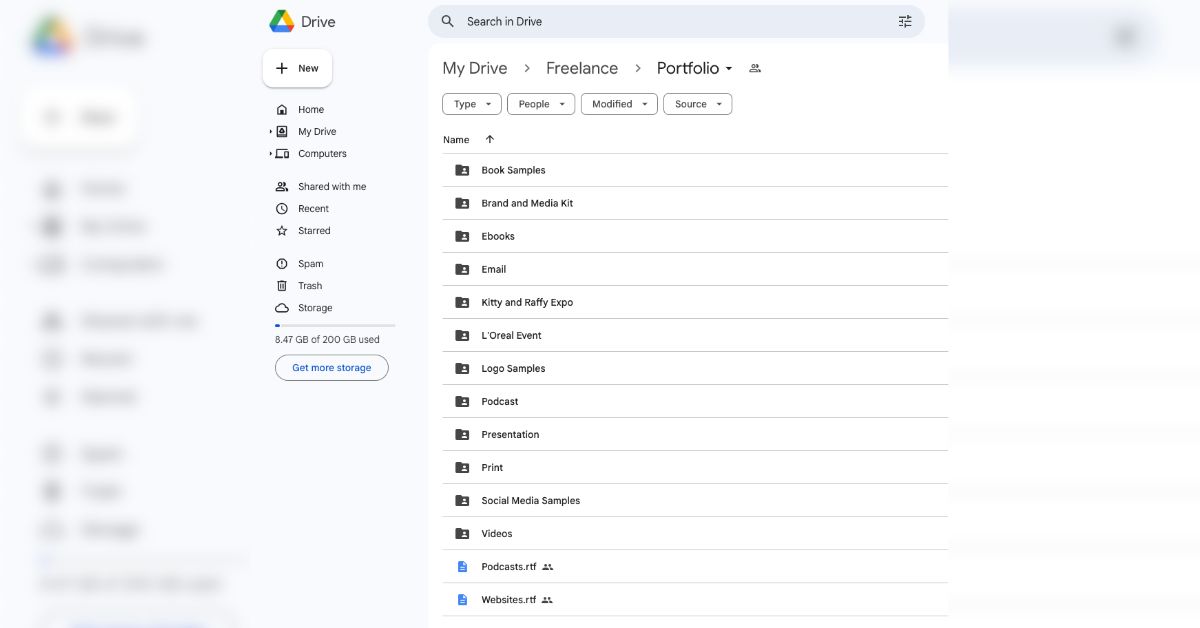How to Build a Freelancer Resume That Works
When you’re applying for freelance jobs, your resume doesn’t need to be long or complicated. In fact, a one-page resume often works better. But how do you fit everything on just one page without looking underqualified?
Here’s how to keep it short, sharp, and impressive.
Why Shorter Works Better
Clients don’t have time to read through a long resume, especially when they’re reviewing multiple applications. They’re not looking for your full career history. They want a quick, professional snapshot that shows:
- What you do that’s relevant to their job requirement
- How you can help them
- Whether you’re someone they can trust to get the job done
That’s why a one-page resume is more effective. It’s easy to skim, quick to understand, and gives just the right amount of information to spark interest.
Instead of overwhelming them with details, a one-page resume highlights your strengths, shows your professionalism, and respects the client’s time.
Your goal isn’t to impress with volume but to show value with clarity. Think of it as your freelance highlight reel.
Key Sections to Include in Your Resume
Let’s break down what to include and what to leave out to create a resume that gets results.
Summary
This is your 2–3 sentence elevator pitch. Highlight your core skills, experience level, and the type of work you specialize in. Make it client-focused.
Example: “I work best with service-based businesses, coaches, and lifestyle brands looking to increase visibility, engagement, and conversions without the overwhelm.”
Keep it conversational, clear, and specific to the type of clients you want to attract.
Work Experience & Clients
This is your skills in action. List projects or clients you’ve worked with, and focus on results. Use a format like this:
Client – What you did – Outcome
Example: “Managed Instagram and TikTok content calendar, increasing monthly reach by 3x and boosting bookings through content-driven messaging.”
If you’re just starting out, you can include:
- Volunteer work
- Internships or school projects
- Practice projects or mock samples
Anything that demonstrates your ability to do the work is worth including.
Portfolio or Sample Work
Even if you only have a few samples, create a clean portfolio and include a link to it in your resume. You can use Google Drive, Notion, or your own website.
I organize my portfolio in a Google Drive folder, sorted by project type. I typically link to the entire folder in my resume under “My Portfolio” so clients can easily browse relevant samples.
 A few well-presented samples can build more trust than a long resume ever could.
A few well-presented samples can build more trust than a long resume ever could.
Skills = How You Work
In this section, shift away from listing only task-based skills (like “Email Marketing”) and show how you approach your work.
This section highlights your soft skills, traits that make you a reliable freelancer.
Examples to include:
- Strong communication with clients
- Dependable and deadline-driven
- Creative problem-solving
- Self-motivated and adaptable
- Team collaboration in remote settings
- Detail-oriented and organized
Clients often care more about your ability to communicate and follow through than any single technical skill.
Tools = What You Can Use
This is where you list platforms and software you’re familiar with. It’s one of the most important sections for freelance clients, because:
- They don’t always have time to train someone from scratch
- It shows you can work independently
- It demonstrates that you’re up to date with industry tools
Examples of tools (may vary across industries):
- Meta Business Suite
- Canva, CapCut
- Active Campaign, MailerLite, ConvertKit
- Trello, Notion, Slack
- Google Analytics, LinkedIn, TikTok
If You’re a Beginner
Don’t worry if you’re new and still learning the ropes. Here’s how to build your resume with confidence:
- Research common tools for your desired freelance role
- Watch free tutorials or take short courses
- Try out free versions of the tools
- List tools you’re currently learning or exploring
You don’t need years of experience, just enough familiarity to show initiative. Clients appreciate beginners who are eager and proactive. And if you land the interview, being familiar with the tools ahead of time gives you a confident edge and shows that you’re ready to hit the ground running.
What to Skip (Even If You Think It’s Important)
This is where a lot of freelancers get it wrong. It’s easy to think “The more I put in, the more impressive I’ll look,” but actually, less is more (as long as it’s the right “less”).
Here’s what to leave out of your one-page resume:
Long descriptions of unrelated jobs
Unless your stint as a barista taught you time management and social media skills, skip every past role. If it doesn’t connect to the freelance work you’re applying for, it’s just taking up space.
Objectives like “Looking for a challenging opportunity…”
That phrase hasn’t been relevant since the early 2000s. I know! You’re not here to find yourself, you’re here to help them.
Full job history from years ago
Nobody’s hiring based on what you did many years ago. Focus on your recent, relevant experience, and leave the time capsule stuff for your LinkedIn (if you must).
Buzzwords with no real evidence
“Passionate, motivated, results-driven ninja”? Sounds fancy, but what did you actually do? Clients want proof, not poetry.
Personal details like age, birthday, or full address
Unless the job involves mailing you snacks, they don’t need your complete life story. Save your zodiac sign and street name for later. Clients may ask for those details after they hire you, not before.
Important: Avoid adding anything that clutters your resume or distracts from your core strengths.
Make It Easy to Personalize
Think of your one-page resume as a base template. Before sending it to a client:
- Adjust your summary to match the job or project
- Emphasize relevant skills for the role
- Swap in portfolio pieces that reflect the client’s industry
Example: If you’re applying to write for a financial brand, lead with financial writing samples, not lifestyle content.
Tip: Save Different Versions
It’s a smart idea to create two or three versions of your resume. For example:
- One focused on writing
- One for admin or virtual assistant work
- One for creative or design-based projects
This helps you apply faster and makes your applications more relevant to the client.
My Tita Thoughts
A great freelancer resume isn’t about listing everything you’ve ever done. It’s about choosing the right things to show that you’re the best fit for this client’s needs.
Keep it:
- Clean
- Concise
- Focused on value
You don’t need more space, you just need more strategy.
Have a question or just want to connect? Feel free to send me an email or follow along on Instagram @virtualtita. Let’s talk freelancing, personal finance, or anything in between.
Want a Shortcut?
There are tons of free resume templates on Canva, but if you want something that’s already been tested in the real world, you can download the exact one-page freelancer resume I’ve used to land actual freelance jobs.
It’s intentionally simple and minimalist. Why? Because clients don’t have time to dig through clutter. A clean layout helps them focus on what matters most: your skills, experience, and potential.
That said, you can absolutely make it your own. Change the colors, adjust the fonts, add a bit of your personality. The structure is solid, but the style is up to you.
Grab your free copy below and start customizing it to fit you.



